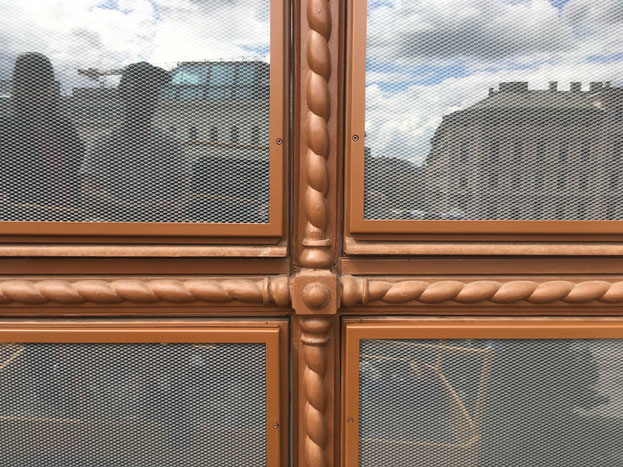Sun protection systems on listed historical museum buildings



Exterior view of sun protection elements KHM, Vienna-A
Foto © Knauer Architekten
External sun protection elements ensure unobstructed eye contact to the outside - KHM, Vienna-A
Foto © Knauer Architekten
Task
Implementation of sun protection systems on listed historical museum buildings to reduce summer heat input and reduce UV light exposure of the exhibits.
Museums, which are housed in historical buildings in particular, are faced with the problem that the external and internal appearance of the entire building and thus also the existing window
surfaces are protected and may therefore not be changed. At the same time, for conservation and functional reasons, ever higher demands are placed on them:
• Avoidance of summer overheating
• Adaptability of illuminance
• Easy maintenance
• As unobstructed as possible visual connections of visitors from the inside to the outside
• No impairment of the historical external appearance of the building by the measures taken.
The solution of this complex task should be as invisible as possible.
The solutions now designed by our office provide, in consultation with the Federal Monuments Office, adaptations of the existing historical window elements, which can react to all requirements in
a coordinated manner through the intelligent arrangement of up to eight different functional layers.
These different layers are composed of a sequence of different materials such as glasses, foils, expanded metals and textiles.
As external sun protection, a "shading frame" is mounted on the outside of the historic window sashes.
The dimensions of the steel profiles were calculated in their slenderness in such a way that the elaborate profiling of the window remains visible as a clear relief. Similar to an outwardly
opening window sash, the frames can be swung open at an angle of 90° degrees and thus enable the alarm-protected window elements to be cleaned from the outside when closed.
These different components can now be adapted in different combinations to the respective requirement profiles and are implemented in several larger federal museums in Vienna, including the KHM
(Kunsthistorisches Museum), NHM (Natural History Museum) and MAK (Museum of Applied Arts).
